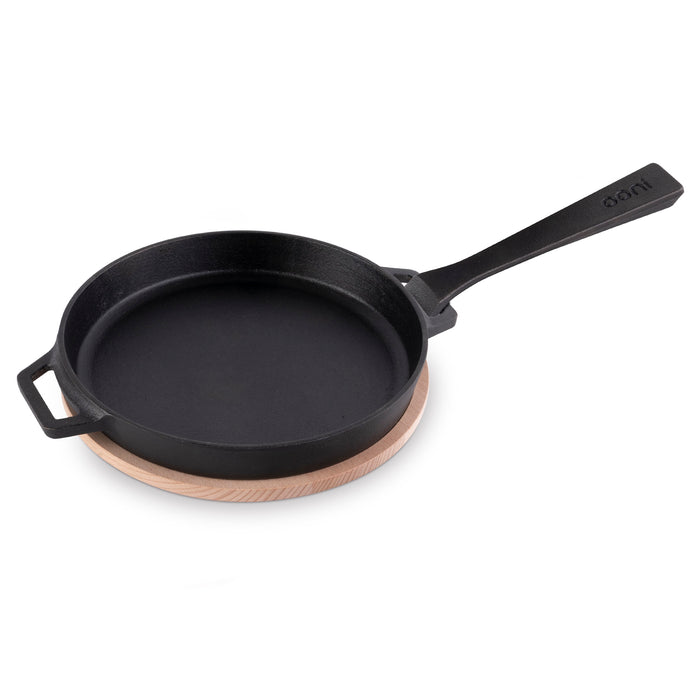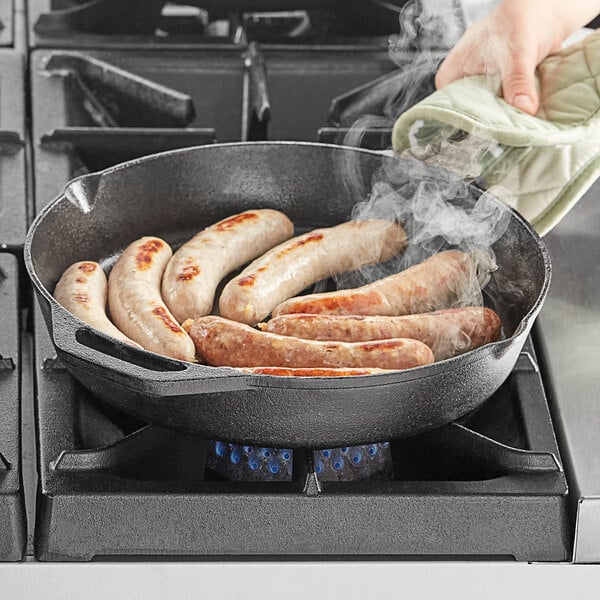The Ultimate Skillet Guide: Finding, Using, and Caring for Your Pots and pans
The Ultimate Skillet Guide: Finding, Using, and Caring for Your Pots and pans
Blog Article
The Ultimate Skillet Purchasing Guide: Whatever You Required to Know
The Ultimate Skillet Purchasing Guide: Whatever You Required to Know is a detailed resource aimed at aiding you make a notified choice when purchasing a frying pan. Whether you're a professional cook or a home chef, selecting the appropriate skillet can substantially enhance your food preparation experience. Additionally, it offers understandings into the different products used in skillet building and the factors to consider you ought to maintain in mind while picking a skillet.
Types of Frying Pans
When considering the different kinds of frying pans available, it is very important to comprehend the numerous materials they are made from and their one-of-a-kind residential or commercial properties. The material of a frying pan substantially affects its performance, toughness, and also cooking outcomes. The most common materials utilized in frying pan production consist of stainless-steel, cast iron, non-stick, and copper.
Stainless steel frying pans are understood for their toughness and even heat distribution. Cast iron frying pans, on the various other hand, are respected for their exceptional warm retention and even warmth circulation.
Non-stick skillets are coated with a layer of Teflon or ceramic, which stops food from sticking to the surface. Copper frying pans, while less usual, are valued for their exceptional heat conductivity.

Considerations for Frying Pan Products
To make a notified decision when purchasing a skillet, it is important to carefully take into consideration the residential or commercial properties and qualities of various frying pan materials. The material of the frying pan can greatly influence its efficiency, food preparation, and resilience capabilities. There are numerous typical products utilized in skillet building, each with its own benefits and drawbacks.
One preferred skillet product is stainless steel. Stainless-steel skillets are recognized for their sturdiness and resistance to rust and rust. They also supply even heat circulation and retention, making them suitable for various food preparation methods. However, stainless-steel skillets may not have the most effective non-stick residential or commercial properties, and food might adhere to the surface if not effectively seasoned or layered.
Cast iron is another widely utilized product for frying pans. Cast iron frying pans are known for their outstanding warm retention and circulation. They are additionally very durable and can last for generations with appropriate care. Nonetheless, cast iron frying pans call for normal seasoning to maintain their non-stick homes and stop rusting.

Copper frying pans supply excellent heat conductivity, enabling exact temperature level control. They are usually lined with stainless-steel for durability and ease of maintenance. Copper frying pans can be costly and need routine polishing to maintain their look.
Crucial Features to Try To Find in a Skillet
What are the vital functions to think about when selecting a frying pan? A small frying pan may be ideal for single portions or small recipes, while a larger frying pan is much more ideal for cooking meals for a family members or a larger team.
Another critical function to think about is the material of the skillet. Various materials, such as stainless-steel, cast iron, and non-stick coverings, supply different advantages and drawbacks. Stainless steel frying pans are non-reactive and resilient, cast iron frying pans provide exceptional heat retention and even cooking, while non-stick frying pans make cleaning a breeze.
In addition, the handle of the frying pan is a vital feature to take into consideration. Search for a frying pan with a comfortable and strong handle that stays cool down to the touch, enabling easy and risk-free handling throughout food preparation.
Lastly, consider the cost and top quality of the frying pan. Skillets come in a wide variety of rates, so it is necessary to find one that fits your budget plan while still using high quality and toughness.
Dimension Matters: Locating the Right Skillet Dimension for Your Requirements
What variables should be thought about when identifying the appropriate skillet size for your cooking needs? There are several factors to consider when it comes to choosing the appropriate frying pan dimension. The very first aspect is the number of individuals you generally prepare for. If you are preparing for a big household or hosting dinner events regularly, a bigger skillet, such as a 12- or 14-inch one, would be more ideal. On the various other hand, if you commonly prepare for a couple of people, a smaller frying pan, around 8 or 10 inches, would certainly be enough.
The kind of recipes you usually prepare also plays a function in establishing the appropriate skillet size (skillet guide). If you have you could check here a tendency to prepare recipes with a whole lot of ingredients or require more area for turning and mixing, a bigger skillet would be much more functional.
Lastly, consider your storage room. Frying pans can take up a considerable quantity of area in your cooking area closets, so make certain you have adequate area for the dimension frying pan you pick. By considering these factors, you can find the right skillet dimension that matches your food preparation requires flawlessly.
Frying Pan Care and Maintenance Tips
One crucial element of caring for and maintaining your skillet is to consistently tidy and season it. Cleansing your skillet after each usage is necessary to eliminate any food deposit and avoid the buildup of oil or debris.
Flavoring your frying pan is one more crucial step in its treatment and upkeep. Seasoning includes using a thin layer of oil to the frying pan's surface area to create a safety obstacle versus corrosion and to enhance its non-stick buildings.
Along with routine cleansing and flavoring, it is necessary to prevent radical temperature changes, such as moving a hot frying pan to a cool surface or vice versa, as this click here now can trigger bending or cracking. Also, prevent utilizing steel tools that can damage the frying pan's surface area. By complying with these care and maintenance ideas, you can make certain that your frying pan continues to be in superb problem for years to come.
Conclusion
In conclusion, this supreme skillet purchasing guide has offered a summary of the different kinds of skillets, considerations for skillet products, essential features to look for, and tips for treatment and upkeep. By recognizing these variables, customers can make enlightened choices when acquiring a skillet that fits their needs. With the right frying pan, food preparation can be simplified and more delightful.
The Ultimate Frying Pan Purchasing Guide: Every Little Thing You Required to Know is a detailed resource intended at aiding you make a notified decision when acquiring my blog a frying pan.To make a notified decision when acquiring a skillet, it is important to carefully take into consideration the homes and qualities of various frying pan materials. Stainless steel frying pans are non-reactive and resilient, cast iron frying pans give exceptional warm retention and even cooking, while non-stick frying pans make cleaning a wind.
Skillets can take up a substantial amount of space in your cooking area cabinets, so make certain you have enough space for the size frying pan you pick.To wrap up, this ultimate frying pan buying overview has actually offered an overview of the various kinds of skillets, factors to consider for skillet materials, crucial functions to look for, and tips for care and upkeep.
Report this page